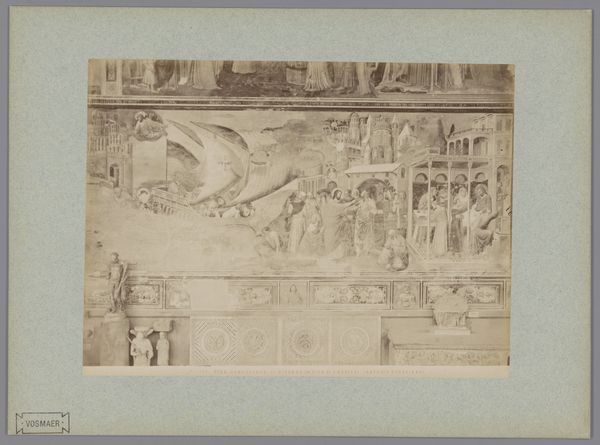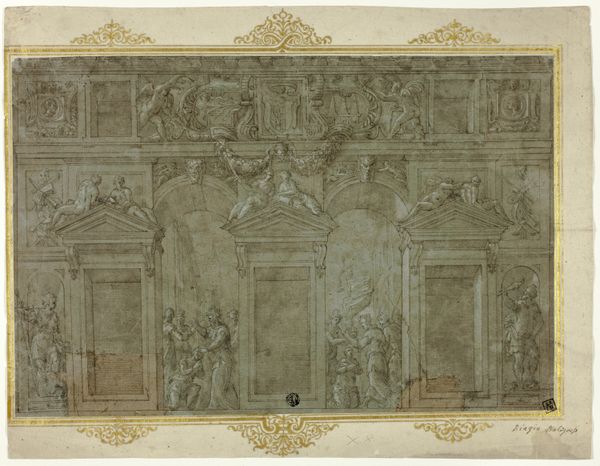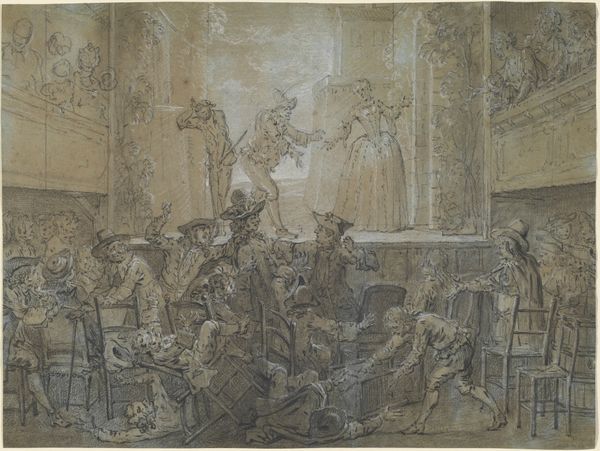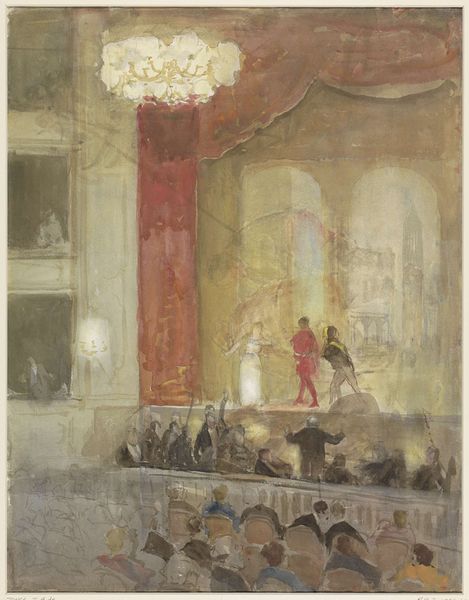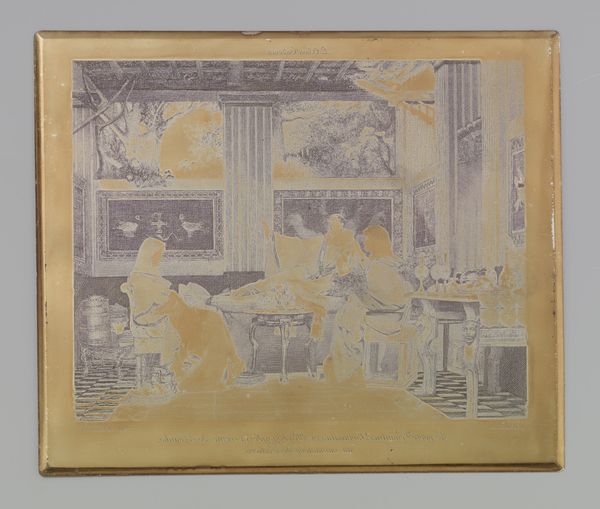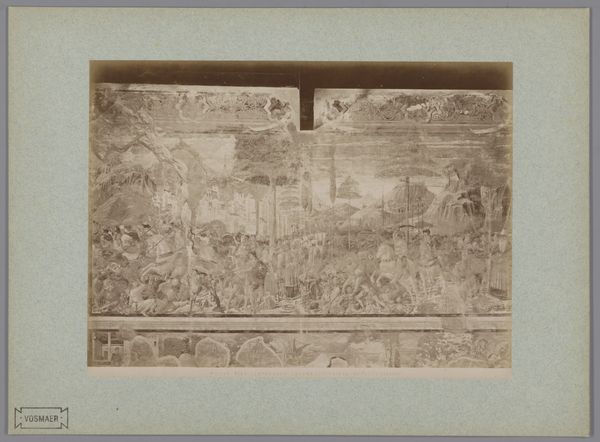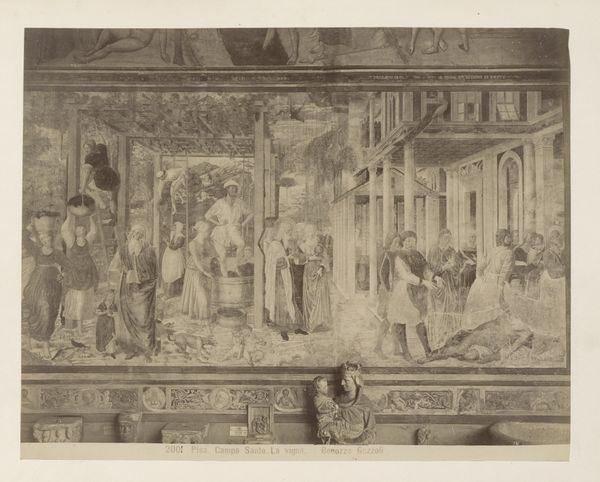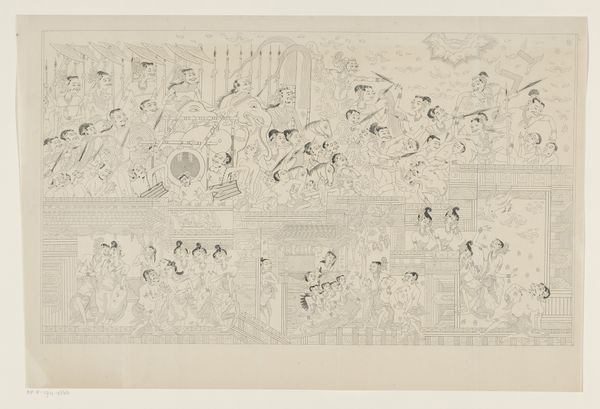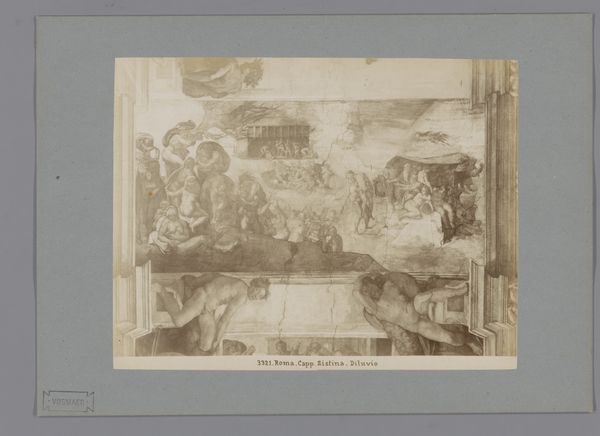
drawing, paper, ink, pen
#
portrait
#
drawing
#
narrative-art
#
baroque
#
paper
#
ink
#
coloured pencil
#
pen
#
genre-painting
#
history-painting
Dimensions: height 382 mm, width 485 mm
Copyright: Rijks Museum: Open Domain
Editor: So, this is Anthony van Zijlvelt's "Toespraak van Karel II in de Staten van Holland," created somewhere between 1666 and 1690, using pen, ink and coloured pencil on paper. It's quite fascinating how he's captured such a large gathering in a single drawing. What's your interpretation of the piece, looking at it from a historical perspective? Curator: Well, immediately, I consider how such an image functions within the complex power dynamics of its time. This isn’t merely a record of Charles II addressing the Dutch States; it’s a carefully constructed representation of power. Consider the setting: a grand, almost theatrical space. What does that space say about the relationship between the monarchy and the Dutch Republic? Editor: It does feel staged, almost propagandistic. Like a power play frozen in time. Curator: Exactly. And it's important to ask ourselves who this image was for. Was it meant to circulate amongst the Dutch elite, reinforcing the image of Charles II’s authority, or was it intended for a wider audience to promote a certain narrative of Anglo-Dutch relations? The politics of imagery were incredibly potent then. The inclusion of angelic figures adds to that pomp, what’s your take? Editor: It definitely heightens the drama. The angels combined with the setting makes Charles’ speech seem almost divinely sanctioned. Do you think people actually believed in that kind of messaging, or was it just performative? Curator: That's the key question, isn't it? Whether it was genuinely believed or purely performative, the image served a purpose: to legitimize power. And understanding that purpose is essential to understanding the art. Now, how might its medium influence its purpose? Editor: Good point! The choice of drawing rather than painting might suggest a wider distribution, as prints could easily be made and dispersed more widely. Fascinating to think how accessible historical events were shaped. Curator: Precisely! By understanding its production and probable reception, the narrative embedded within the image becomes more potent. That makes the work richer and more meaningful for contemporary audiences too.
Comments
No comments
Be the first to comment and join the conversation on the ultimate creative platform.



